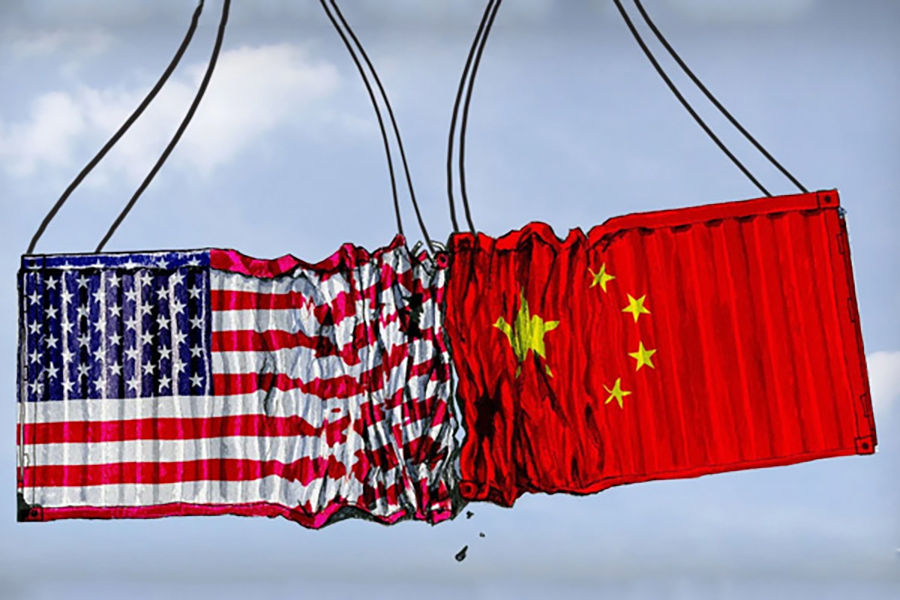Geographical Indications: A necessary trade tool for India
• ‘Geographical Indications’ or ‘GIs’ refer to “indications which identify a good as originating in the territory of a country, or a region or locality in that territory, where a given quality, reputation or other characteristic of the good is essentially attributable to its geographical origin”.
• GIs help consumers in distinguishing goods produced in a particular geographical region from goods produced elsewhere thereby preventing them from being misled.
• Some of the most celebrated cases of international Geographical Indication related to food industry are Champagne (France), Darjeeling tea (India), Port wine (Portugal), Etivaz, Gruyere Cheese (Switzerland), Idaho Potatoes (USA), Vidalia Onions (USA) and Jasmine Rice (Thailand).
• Indian exporter associations should aggressively push for GI registration in regions such as EU for products like Mizo Chilli, Goa Feni and Alphonso Mangoes to enhance their exports to lucrative markets like the EU.

The role of GIs to guard the significance of local culture and tradition in the face of globalisation. India’s rich cultural diversity also reflects that some traditional products have the benefits of nutritional sufficiency and market potential, and once they are established as geographical indicators, their overall production and sale will definitely augment. Further these GI products are the pride of India’s rich cultural traditions. The vast majority of GIs related to food are not well known and are often legally unprotected and the consumers consumes them realizing that those products are in fact GIs or what the GI represents.
As per the article 22.1 of the Agreement on Trade-Related Aspects of Intellectual Property Rights (the TRIPS Agreement), ‘Geographical Indications’ refers to “indications which identify a good as originating in the territory of a country, or a region or locality in that territory, where a given quality, reputation or other characteristic of the good is essentially attributable to its geographical origin”. The concept of Geographical Indications came into existence because for quick profits, a lot of counterfeited products tarnished the image of genuine products, which led to a loss for producers and a form of fraud for consumers.
GI helps consumers distinguishing goods produced in a particular geographical region from goods produced elsewhere thereby preventing the former from being misled. Their role is to protect the essential contribution of a geographical location in the making of the product, provided by factors like special climatic, geological and biotic conditions and by a sui generis know-how. Protection through GIs can help localize economic control, promote rural socio-economic development and assure higher economic returns. This is crucial for the producers of GI products in developing countries since a lot is at stake for them.
Most celebrated cases of international Geographical Indication related to food industry are Champagne (France), Darjeeling tea (India), Long-Ging Tea (China), Port wine (Portugal), Etivaz, Gruyere Cheese (Switzerland), Idaho Potatoes (USA), Vidalia Onions (USA) and Jasmine Rice (Thailand). Among the processed food commodities that enjoy GIs: cheese and wine-spirits share the maximum recognition, followed by meat and meat products like ham and salmon and then by oil and fat products such as olive oil and then miscellaneous items. Many food processing units in sectors like cocoa, chocolate and tea processing are reaping the advantages of GI in export markets. Some of the perennial benefits reaped by GIs are:
I. Name is reserved to products respecting the specification
II. Name is not reserved to one single producer, but can be used by all producers respecting the specification
III. Administrative protection by public authorities
IV. Differentiation on the market allows often a better price and better division of the added value
V. Stronger position in the food chain.
VI. Differentiation tools in marketing strategies which create brands. Brand recognition is an essential aspect of marketing.
VII. Geographical indications are distinctive signs used to differentiate competing goods. They function as product differentiators on the market
Learning lessons from European Union
European countries have several successful examples of branding and marketing of GI products. For example: Cognac, Roquefort cheese, Sherry, Parmigiano Reggiano, Teruel and Parma hams, Tuscany olives, etc. In the EU, Protected Geographical Indication (PGI), Protected Designation of Origin (PDO) and Traditional Specialty Guaranteed (TSG) seals are used to encourage and protect the reputation for quality of agricultural products and food. In EU following are the categories where GI is accepted and registered:
(i) Agricultural products and foodstuffs – PDO, PGI – Regulation (EU) No 1151/2012
(ii) Wines – PDO and PGI – Regulation (EC) No 1308/2013
(iii) Spirits – GI – Regulation (EC) No 2019/787
(iv) Aromatised wines – Regulation (EU) No 251/2014
Protected Designation of Origin (PDO) is given to a product that is produced, processed and prepared in a determined geographical area using recognized know-how. Protected Geographical Indication (PGI) is used to denote agricultural products and foods closely linked to a geographical area, where they are produced and/or processed and/or prepared. Allowing individual members to differentiate themselves through quality enhancements, and build their own brand names in addition to the GI branding, was seen as encouraging innovation and quality enhancements while ensuring that minimum GI specifications are met. Let’s have a look how logo protects the products in EU under GI:
• Valuable intellectual property right (collective right)
• Protection of the name, not of the product
• Against any misuse, imitation or evocation and any other practice liable to mislead the consumer
• Right to use, as it applies to any operator within the geographical area respecting product specification
• Protection unlimited in time, but with possibility of cancellation if compliance with the product specification is no longer ensured
Now, when it comes to the registration of products under GI from third or foreign nation, EU has so far registered 33 GI products, maximum hailing from China (10) followed by Thailand (4) and Turkey (3).
Figure 1: Registered GI product in EU from Third Nation
Success Cases:
1. Darjeeling PGI (India)
(i) Protection for export markets
(ii) Control over product presentation (100%)
(iii) 2004 national DO
(iv) 2011 EU Registration (PGI)
(v) Significant increase of price after EU registration
(vi) Double price of substitutes
2. Café de Colombia PGI (Colombia)
(i) Strategy of differentiation by origin
(ii) Control over product presentation (100%)
(iii) 2004 national DO
(iv) 2007 EU Registration
(v) Increase in production as of 2013
(vi) Increase in growers’ income
3. Kampot Pepper PGI (Cambodia)
(i) In 2010 protected as a GI at national level
(ii) In 2014 EU application
(iii) Infra-regional strategy
(iv) Price boosted after EU registration.
(v) Operators/families/producers doubled in 4 years
(vi) Production doubled in 4 years (70% export)
The process of getting a GI under third country in EU is relatively simple. Non-EU application are sent directly to the Commission, together with the proof of protection in the country of origin. Government interventions or initiatives are not required for approaching to start a GI process from third country. Rather, Association members of that product from the third country can directly apply for GI registration and then the case is examined by the European Commission. Thus, by pushing our food and agri products for GI status, India can immediately escalate its exports, not just to EU but also to the World. Products like Alphonso mangoes, Feni of Goa, Mizo Chilli, Sikkim Tea and similar other products can be immediate picks.













Leave a comment